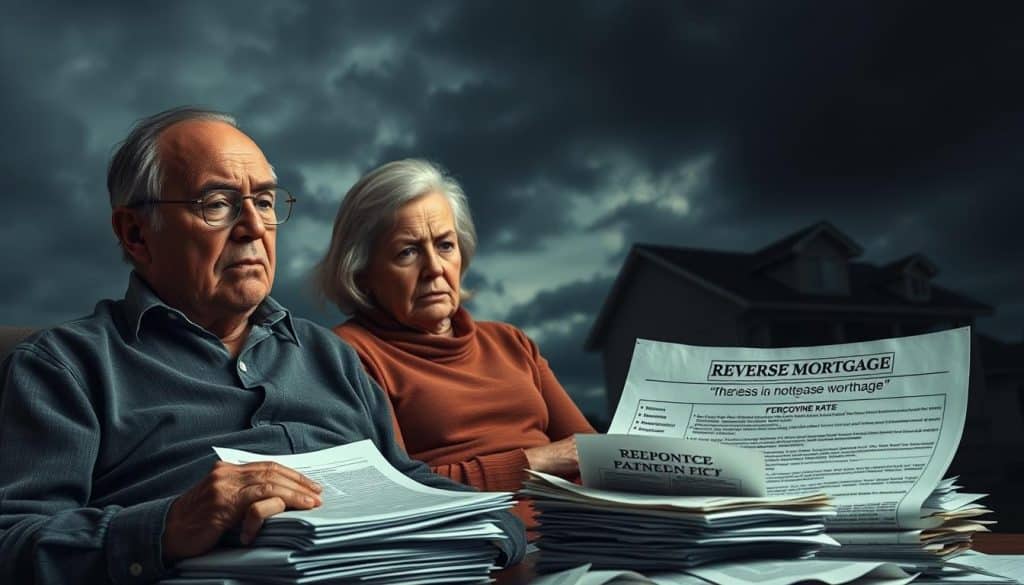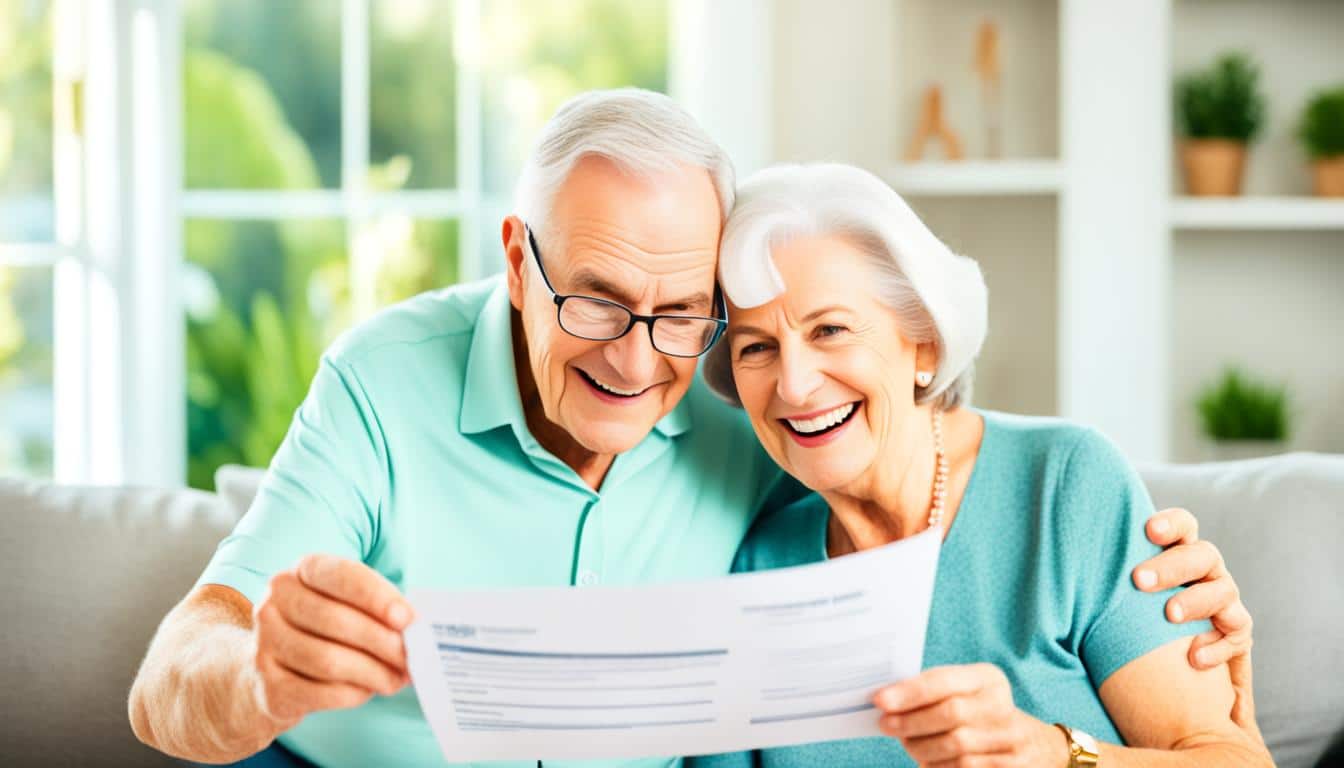Table of Contents
Ever catch yourself wondering, “How Much Can I Borrow with a Reverse Mortgage?” That question pops up a lot for homeowners 62 and older who need a boost for retirement. The money you can pull out isn’t set in stone; it actually shifts depending on three main things: how much your home is worth, how old you are, and what current interest rates look like. In this post we’ll break down those factors, show you possible loan amounts, and explain how this money can reshape your retirement plan through elite lending.
Key Takeaways
- In 2025, the limit for a Home Equity Conversion Mortgage (HECM) will rise to $1,209,750, opening up more cash for seniors.
- If you’re 62 this year, you can tap about 36.9 percent of your home’s value, or up to $447,607.
- That maximum goes up as you age; at 90, the HECM could provide as much as $771,820.
- Reverse mortgage features turn your equity into money without a monthly payment, a useful tool for funding late-in-life expenses.
- Keep in mind that interest rates affect how much you can borrow. Lower rates typically widen the loan amount you can receive.
Understanding Reverse Mortgages
A reverse mortgage is such a helpful financial tool for homeowners aged 62 and older. It allows them to turn some of their home equity into cash for their retirement. Since the loan is paid off only when the homeowner moves, sells, or passes way, there are no monthly payments to worry about. This lets seniors put extra cash into their pockets when they need it most, without the pressure of extra bills every month.
With a reverse mortgage borrowing capacity, the homeowner receives money and the balance of the loan grows over the years. When the time comes to settle the loan, the property is sold and the lender is paid from the sale. Any extra money from the home sale goes to the homeowner or their heirs. It’s a simple way for older homeowners to access value that sat locked in their house.
What is a Reverse Mortgage?
A reverse mortgage is a special loan that lets seniors turn part of their home equity into cash—today’s money for tomorrow’s needs. Right Borrowing capacity get the funds in a way that works best for them. They can take a lump sum, get monthly checks, or use a line of credit activated later. Throughout the loan, the senior homeowner keeps the home’s title and shares. The senior must keep the house in good condition, keep paying property taxes, and have a homeowner’s insurance policy in effect.
Eligibility Requirements
Getting a reverse mortgage is straightforward, but there are some must-meet requirements. First, the borrower must be at least 62 years old for Borrowing capacity. The house must be a primary residence with enough equity, usually at least 50 percent. Eligible homes include most single-family houses, some condominiums, and townhomes. However, co-operative housing homes do not meet the criteria. Once these conditions are confirmed, the application can move ahead without a hitch and get the homeowner the cash they need.
Factors That Determine How Much You Can Borrow
To understand how much money you can get from a reverse mortgage, you need to think about a few important things. First, there’s your home equity, or how much your house is really worth compared to debts you still owe. Subtract your current mortgage from your home’s market value—that’s your equity. Lots of equity usually means you can borrow a bigger chunk of money.
Home Equity Basics
The loan-to-value (LTV) ratio helps lenders quickly see how much of your home’s value you can get and if they have the Borrowing capacity. A higher ratio may let you access more cash. Plus, if your home value increases, your borrowing limit can get a boost. Keep in mind there are closing costs, like origination fees and mortgage insurance premiums. These take a small slice out of how much cash you take home in the loan.
Borrower Age
Age is the biggest single number lenders look at. You need to be at least 62 to qualify for a Home Equity Conversion Mortgage (HECM). The lender looks at the youngest borrower’s age in the household, and older borrowers with Borrowing capacity usually get more cash. That’s because the lender expects the loan to be paid off sooner, so there’s less time for the interest to pile up. Age really does matter here, so make sure to factor it in.

Current Interest Rates
Interest rates can really change the amount of cash you can pull from your home. When rates drop, lenders let you tap into a bigger chunk of equity. When rates rise, that amount shrinks pretty fast. You also want to know whether you pick a fixed rate or an adjustable rate, because that choice guides both how much you can take out today and what your budget might look like years from now.
For deeper details about how reverse mortgages work and the specific dollar limits that today’s rates can place on you, look at the guidance on this page.
Calculating Your Potential Loan Amount
A reverse mortgage lets people 62 and older turn home equity into money they can use now. The most common version, called the Home Equity Conversion Mortgage or HECM, uses a straightforward formula, but a few personal details have a big effect. You multiply your home’s current appraised value by the HECM lending limit, then you factor in the homeowner’s age, and finally, you include current interest rates. The end number is your loan amount.
The Home Equity Conversion Mortgage (HECM)
The HECM program is the only reverse mortgage insured by the FHA, and it has very clear rules. To qualify, you must be at least 62 and have enough built-up equity in the home. The older you are, the larger the loan can be, mainly because the lender figures you have a shorter time to pay it back—effectively, you don’t really pay it back, but this shorter time frame raises the amount they can lend you today.
Formula for Loan Calculation
Calculating how much you can borrow on a reverse mortgage isn’t hard—just plug a few numbers in. The formula considers your home’s value, any remaining mortgage, and the interest rate. Picture a 72-year-old homeowner with a house worth $400,000. After the math, she might qualify for about $196,000. A 62-year-old in the same market could see a figure closer to $176,000. This example shows that younger borrowers generally have access to smaller amounts.
Costs Associated with Reverse Mortgages
Knowing the costs that come with a reverse mortgage borrowing capacity is vital for solid financial planning. The total can be broken down into two big categories: front-end fees you pay when you take out the loan and ongoing costs you’ll pay every month. A handle on these expenses lets homeowners make informed money decisions. check elite lending
Upfront Costs and Fees
Upfront costs on a reverse mortgage borrowing capacity include a few big numbers. The origination fee is either $2,500 or 2% of the home value up to $200,000. For value over that, the bank adds 1% of that portion, up to a total cap of $6,000.
Next is the Initial Mortgage Insurance (MIP) charge. This fee is 2% of either the home’s appraised value or the reverse mortgage limit, whichever is smaller. Homeowners also pay for required counseling, typically $125 to $150. Additional fees for the credit report, the appraisal, and flood certification will also be added. When you total everything, upfront costs can be larger than you might expect. check out elite lending
Ongoing Financial Responsibilities
Once you take out a reverse mortgage, you’re still responsible for certain ongoing costs. This includes your regular property taxes, homeowners’ insurance, and the usual upkeep the house needs. Unlike a traditional mortgage, you’re expected to keep these payments current for the reverse mortgage to stay in good standing.
If these bills slip through the cracks, the lender could eventually start foreclosure proceedings. That’s why it’s crucial to look at the complete financial picture and not just the lump sum you may receive at the start.
Advantages for Senior Homeowners
Reverse mortgages are specifically designed to make life easier for older homeowners. By unlocking the equity built up in their home, seniors can convert it to cash while still living there. This flexibility lets them pay bills, make home updates, or simply enjoy retirement a little bit more.
Making Retirement Money Stretch
Most retirement plans hinge on social security, pensions, and the savings you can still manage to stack. These sources often fall short for daily living, let alone unexpected expenses. By turning part of their home’s equity into spendable cash, seniors can stretch their retirement budget and take that trip they’ve always talked about, all without having to move.
Money Without a Tax Bite
Another appealing feature of reverse mortgages is that the lump sum, monthly cash, or line of credit draws you may take from it are not included in taxable income. Because the government doesn’t count these payments as income, retirees can access these funds without the tax headaches that can come from regular retirement accounts. That means the cash you pull is, for all practical purposes, the cash you get to spend.
A reverse mortgage might help seniors cover things like medical bills, home repairs, or daily groceries without taxes eating into the cash.
Risks with Reverse Mortgages
While reverse mortgage borrowing capacity can benefit older homeowners, there are serious downsides. Anyone thinking of one must understand the risks, including how it can cut into an estate and even risk losing the home.
Effect on Inheritance
A reverse mortgage can shrink what homeowners leave behind. The loan interest and fees pile up, and that mean the estate gets smaller. In some situations, debt can equal or exceed a large share of the home’s appraised value. Heirs may find the home with little or no equity left, so it is good to figure out the long-term impact of the loan before signing.

Foreclosure Risks with Reverse Mortgages
Even with a reverse mortgage, a homeowner could face foreclosure. To stay safe, they must keep paying property taxes and homeowner’s insurance. Miss even one of these payments, and they could lose their house. The mortgage balance also keeps growing because of interest and fees, which makes foreclosure a bigger risk. The key step is to keep up with all favorite brand better in half split-oriented homework.
Applying for a Reverse Mortgage
The application for a reverse mortgage is not a quick form to fill out. Think of it like a puzzle with several pieces. First, the homeowner must attend a counseling session. This meeting usually takes about 90 minutes and is the first step. The counseling is required to explain all the choices and what it means to have this mortgage application.
What Happens in Counseling
During counseling, the homeowner learns how the loan works. They must be at least 62 years old and still live in the home. Understanding these and other basics is meant to help them make smart decisions.
Following the Application Steps
Once counseling is finished, the next step is applying. The homeowner needs to collect documents, like proof of income and a list of assets. They also pick a lender and submit the application itself. The whole process from application to decision can take about 45 days. An appraisal is then done. This checks how the home is doing and what it is worth. That appraisal part can take about 1 to 2 weeks to complete.
After your reverse mortgage gets the green light, you’ll wait three days for the money to show up. You can grab these funds a few different ways—a one-time payment, monthly checks, or even a credit line to tap into later. Pick whatever fits your plans best at elite lending.
Picking the Right Reverse Mortgage Lender
The trick to a smooth reverse mortgage is having the right lender on your side. Plenty of companies will quote you rates, but service can feel worlds apart. Elite Lending Service gets our spotlight because they answer your questions before you even ask them.
Qualified pros guide every single step. They spell out what a reverse mortgage is, what it isn’t, and what it means for your budget and your estate. With the best lender in your corner, the paperwork and rules feel a lot less like a puzzle. check elite lending
Why We Recommend Elite Lending Service
Elite Lending isn’t staffed with voice-mail robots. Their seasoned team sits down with you—over the phone or in-person—to map out your goals. They hunt for the rates, fees, and overall deal that serve the money you’ve built in your house.
Clients appreciate the swift texts and direct phone calls that arrive within hours, not days. This type of clear, friendly contact helps you feel confident, not overwhelmed.
The Power of Local Expertise
Getting a mortgage is complicated, so working with a lender who understands your community is a big deal. Elite Lending Service has spent years on the ground here, and that inside knowledge is what really lets them match each client with the best fit.
Their in-the-field perspective means they’re up to speed on local guidelines that could unlock bigger, better funding for your reverse mortgage borrowing capacity. For example, they know which homes are eligible for special state-based programs that let borrowers exceed federal dollar limits, giving more cash in hand. Custom-tailored recommendations become their specialty at elite lending.
Real Stories Speak
Nothing beats hearing how a reverse mortgage actually felt. Comments from Elite Lending borrowers reveal the everyday impact money can have on a retired budget. Several share the same first thought: “No more monthly mortgage payment.” That alone eased the monthly crunch they thought they’d live with forever.
These cheers turn to gratitude for quick, clear information during the process, confirming how a close version of mortgage worked. The caring tone stays with them, quote after quote.
Real Wins, Real Dollars
The gratitude is universal, yet the details are super personal. A retired teacher in Springfield thrilled to switch from a tight monthly budget to funding the grandkid’s college. A couple in Steamboat finally booked their long-dreamed Alaskan cruise, mortgage-free. These are not brags, just relieved “thank yous” that talk of peace of mind and trouble-free retirement.
Elite Lending Service is the Pillar
Ready closure, accurate education, and warm conversations turn confusion into calm, every single day. Community members who chose Elite Lending often comment that they feel guarded, and confident, in a tight budget. Security and trust are their lasting feelings because the agents here are, after all, the community they serve.
Happy clients will often mention a great experience to their friends and relatives. This shows just how powerful positive reviews can be in the reverse mortgage world.
Contact Elite Lending Service
Homeowners age 62 and older who are thinking about a reverse mortgage borrowing capacity should reach out to Elite Lending Service right away. Call (904) 263-0376 or send a quick email to brad@elitelendingservice.com. We understand that reverse mortgages can sound complicated, but with our support, you can access the value in your home without worrying about monthly mortgage payments.
How to Reach Us
Brad Bailey, our local mortgage pro, is ready to advise you. He provides personalized help that matches your situation. Having a neighborhood broker like Brad is a huge plus. He knows the ins and outs of the Jacksonville market and can walk you through the different reverse mortgage borrowing capacity plans.
Advantages of Working with Brad Bailey
Brad Bailey gives you access to multiple lenders to find the best fit. He also guides you through completing the loan application and getting pre-approved. This smooths out the whole mortgage journey. By calling Elite Lending, you are taking a big step toward a worry-free retirement. Brad will put in the effort to secure the best terms for you.





